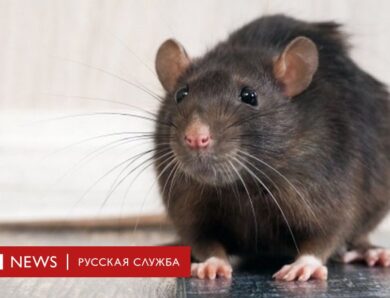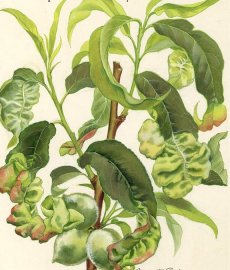Pear pests: why they appear and how to deal with them
Diseases and pests are a real scourge of fruit trees. That is why breeders are constantly working to create improved crops, which will be resistant to diseases and parasites. Pears are one of the least prone crops, however, they are not insured. Therefore, the topic of our today's conversation will be pear pests and control.
The main pests
Do not take seriously pear diseases and pests, means, be prepared for the loss of more than one tree, but also other garden plants. In some cases, the infection occurs very quickly, and getting rid of pears from pests is not so easy. That is why experienced gardeners and specialized publications always emphasize timely and regular preventive measures.
To know, how to fight, you need to know, who poses a danger to the tree. The list of pear pests is quite large. Therefore, we will briefly introduce you to each of them: hawthorn, winter moth, gall midge, dustman, ticks, honeydew, moth, postcard, mile, ash, florist (dovnosik), silkworm and shield. Most of them appear on pear leaves in the spring, others, for example, pear fruit eater, during the appearance and ripening of fruits.
In any case, the tree should be carefully monitored and in the slightest doubt to take immediate measures to control pests. The reasons for this can be hidden in simple things: ants, fertilizers. How dangerous ants, how to get rid of ants - experienced gardeners will help in these matters. But the plants need to be fertilized strictly in accordance with the instructions for feeding.
Hawthorn
This is an extremely voracious insect, quite attractive in appearance butterfly, with a significant spread is able in a few days to destroy not only all the greenery and flowers, but also the ovaries of the tree, and leave only the skeleton of the branches. It is easy to notice and destroy the parasite in late autumn.
If the pear is twisted dry leaves, covered with cobwebs, it, probably, houses for wintering hawthorn caterpillars. To get rid of the pest, you need to treat the tree with insecticides and regularly dig the soil. If for some reason the appearance of butterflies could not be prevented, they can be collected from nearby weeds, on which they spend the night.
Winter moth
Another no less dangerous, but a much less attractive pest. The color of the insect can easily merge with the branches of the tree - grayish-brown color makes them almost invisible. Male insects have well-developed wings, swollen abdomen and long legs. In females, the wings are underdeveloped. Quite large in size, about the length 3 div.
The moth is dangerous not only for your pears, but also other trees. It eats buds and leaves regardless of the type of fruit culture. To avoid the appearance of insects in the spring, before flowering, treat the pear with insecticides. Spider webs should be removed prophylactically, clean the bark from damaged inanimate areas and moss, whitewash tree trunks with lime.
Galicia pear
In this case, the enemy damages not only the green mass, but also the fruits of the plant. It is very difficult to notice an insect, as the threat is not the insects themselves, and the larvae. They devour pear flesh, therefore, over time, the fetus stops developing and dies. Larvae of pear fruit galls feed not only on fetal tissues, but also leaves. Young and trees are most affected after pruning.
Pear saw
This parasite affects only pear trees. In the spring, female sawflies damage the flowers, when laying eggs. The larvae then destroy the ovarian nuclei, passing from fetus to fetus. One larva can leave the seed chambers and seeds of several fruits, then the pears turn black and fall off. Again, timely insecticide treatment can prevent the attack.
Before the flowering period and after the plant should be sprayed several times with organophosphorus solution, solutions of peritroids and neonicotinoids. If the larvae have already appeared, then you should get rid of the fruit immediately. It is better to bury deep, outside the garden. Do not forget about digging the soil!
Pincers
That case, when the enemy is invisible and even more dangerous. There are several varieties of these spider-like microscopic pests. Winter is not terrible for these parasites, they normally tolerate cold in damaged areas of the cortex and under the scales of young kidneys. In the spring, with the advent of the first green, parasites are located on the leaves on the inside.
Ticks suck the juice from the leaf blade, resulting in swelling on the leaves, spots, they dry up and fall off. Adverse activity of mites for young shoots. Colloidal sulfur will help to cope with pests, liming and stripping of trunks, insecticide treatment. The use of translaminar drugs is recommended, which have an exclusively local impact.
Ordinary pear honeydew
Pest, able to slowly kill a tree. Copper sucks the juice from the leaves. At massive defeat the pear lags considerably in growth and development, bears fruit worse, weakens. Over time, the appearance of honeydew is possible, which is a breeding ground for soot fungus. Prophylactically, the pear should be cleaned of keratinized bark, moss and lichens. Along with insecticides, folk remedies have proven themselves well: tobacco smoke, ash-soap solution, silicate glue.
Fruitfuckers
There are three most well-known varieties of fruit eaters: eastern, pear fruit eater and apple. Oriental damages not only pears, but also young shoots, pear - only fruit. In summer, the butterfly lays eggs on the fruit, appeared larvae penetrate and devour the seeds.
Early varieties and soft-skinned pears are particularly vulnerable. In this case, the treatment of pears from pests involves the use of not only conventional insecticides, but also the possibility of using biological. Agrotechnical methods also work well: digging the soil, weeding, removal of damaged fruits.
Podkorovaya leaf_yka
Thunderstorm of all fruit trees, able to affect all parts of the tree. Bark damage, sapwood and cambium provokes the cessation of growth and development of the tree, reduces productivity. To prevent and protect the pear from the parasite, in the spring you need to remove the dead bark, treat the trunks with lime, spray with organophosphorus complexes and mineral oils.
Miles
A small inconspicuous butterfly can cause serious damage to any fruit crop. Tiny larvae eat the flesh of leaves and fruits, which leads to their inevitable death. If you notice the appearance on the leaves of round white min, take action immediately. To begin with, you should try to spray the trees with a solution of bitter pepper and household soap. Indispensable insecticides will also help you.
Ashes
The most common pest, which feeds on the juices of young shoots and carries dangerous infectious viruses. Soap-ash solution and hexachlorane powder will help to cope with it.
Flower weevil or weevil
The appearance of weevils is a threat of crop loss. It damages the flower buds, causing the tree to bloom. Adult weevils also damage pear leaves. You can stop pests with adhesive belts, bark cleaning, whitewashing of trunks with lime. In places with large clusters of weevils, they can be shaken from a tree.
Shovelworm
The biggest pest, in food which will suit everything: leaf, buttons, fruits. One moth eats more 30 leaf. Adhesive belts and insecticides are the most effective means of protection against the parasite.
Comma-shaped shield
Pests, having enviable resistance to adverse climatic conditions. Small brown comma parasites are resistant to insecticides, therefore it is necessary to struggle with them before, how the larvae hatch. Contact insecticides and DNOC solution will be suitable.
Video "Pear Diseases and Treatment"
In this video you will learn about it, what can make a pear sick and how to treat a tree.



